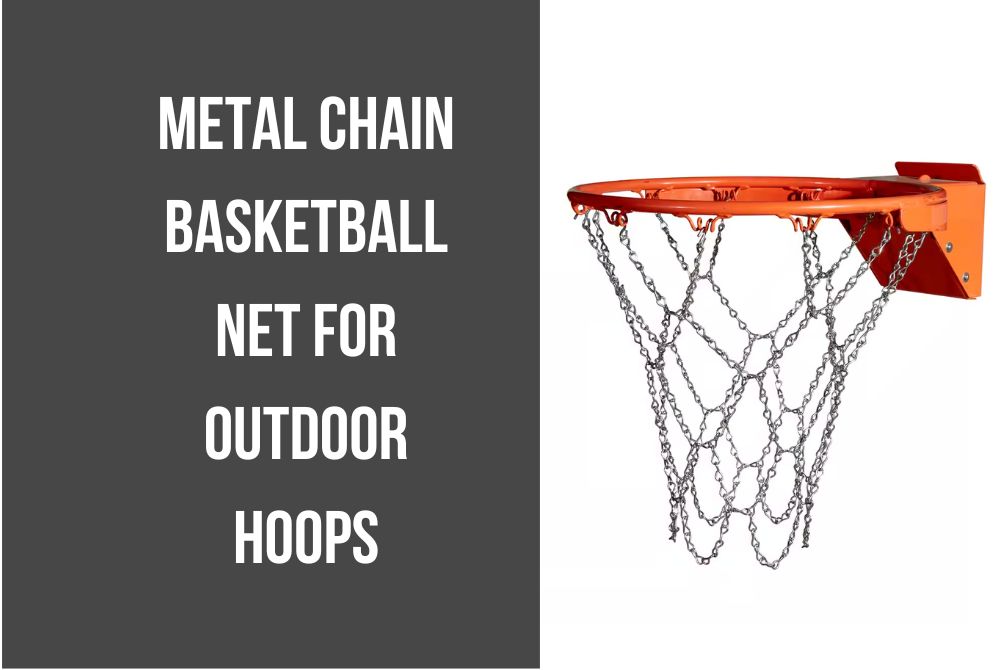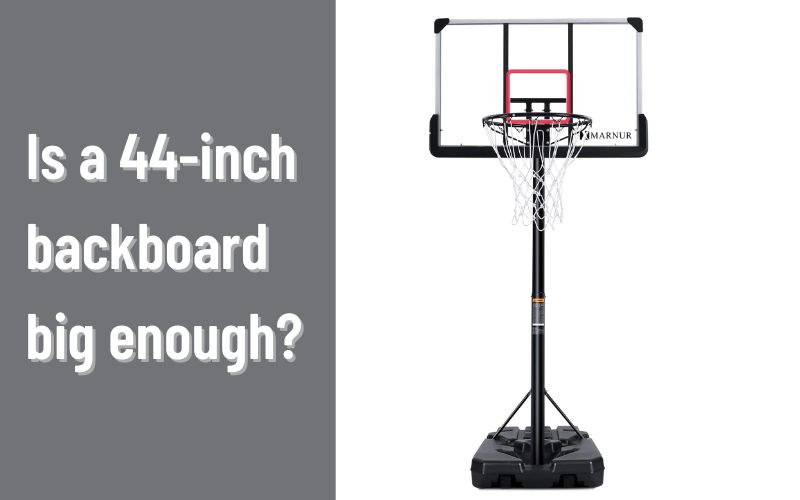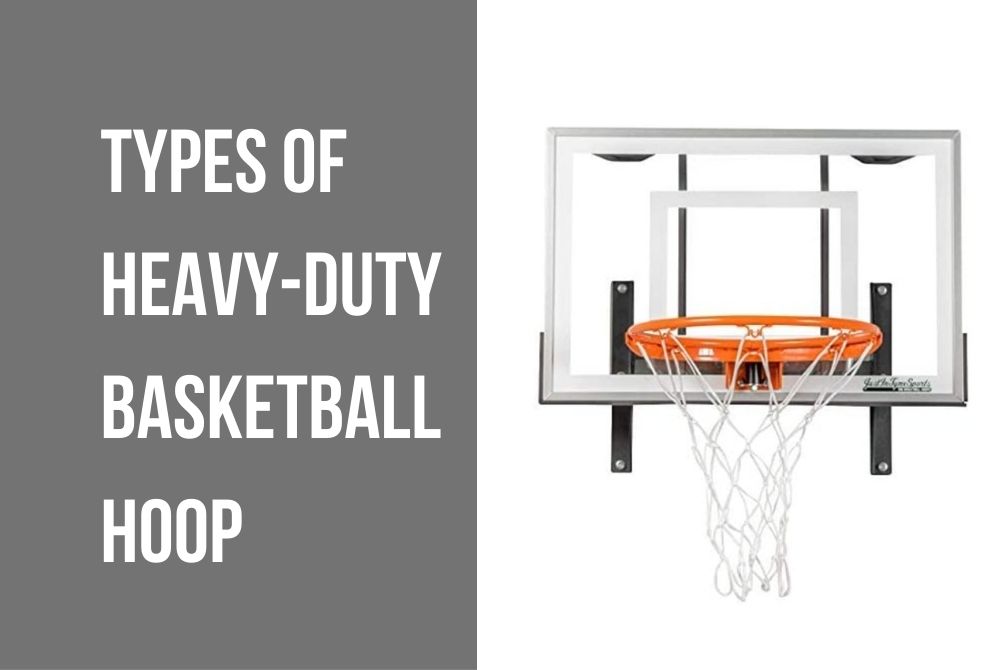Choosing the right size of backboard is an important decision when setting up a basketball system. The size of the backboard can have a significant impact on the game and can affect the skill level and enjoyment of players.
Regulation-sized backboards are 72 inches wide by 42 inches tall, but smaller options are available for those with limited space or for younger players. A larger backboard can make it easier to shoot and rebound, while a smaller backboard can make it more challenging.
In this article, we will provide you with a complete guide to help you choose the perfect backboard size for your basketball system. We will cover everything you need to know, from the factors to consider when selecting a backboard size to the pros and cons of different sizes.
Whether you are a serious player looking to simulate game conditions or a casual player or a parent looking for a smaller option for younger children, this guide will help you make an informed decision.
Also Read: Best Mini Portable Basketball Hoop Review
Measure Your Basketball Court:
A basketball court is a rectangular playing surface that measures 94 feet in length and 50 feet in width. The court is divided into two halves by a midcourt line and each half is further divided into two areas known as the backcourt and the frontcourt. The backcourt is the area behind the midcourt line, while the frontcourt is the area in front of it.
1. Length and Width
Length and width are two fundamental measurements used to describe the size and shape of objects in two-dimensional space.
The length refers to the measurement of the longest side of an object or the distance between two points along the longest axis. It is typically measured in units such as inches, feet, meters, or centimeters.
Width, on the other hand, refers to the measurement of the shortest side of an object, or the distance between two points along the shortest axis. It is typically measured in the same units as length.
Together, length and width can be used to describe the overall size and shape of an object, and are commonly used in a wide range of fields, including architecture, engineering, manufacturing, and design.
2. Free Throw Line Distance
The free throw line distance in basketball is a standard distance of 15 feet or 4.57 meters away from the center of the basketball hoop. This distance is used for shooting free throws, which are awarded to a player when the opposing team commits a foul.
The free throw line is located perpendicular to the center of the hoop and is marked by a painted line that is 2 inches or 5 cm in width. The line is positioned parallel to the baseline of the court and is extended outward to the sidelines.
Players shooting free throws must release the ball from behind the free throw line, and they have 10 seconds to attempt their shot after receiving the ball from the referee. The free throw line distance is a critical element in basketball, as players must practice their shooting technique and accuracy from this distance to maximize their scoring potential.
3. Three-Point Line Distance
The three-point line is a marking on a basketball court that denotes the distance beyond which field goals count as three points instead of two. The distance of the three-point line can vary depending on the level of play, but in the NBA and FIBA (International Basketball Federation) rules, the distance of the three-point line is 23 feet 9 inches (7.24 meters) from the center of the basketball hoop.
The line is arc-shaped and is 22 feet (6.7 meters) away from the center of the hoop at its closest point to the baseline, and gradually extends outwards until it reaches the 23 feet 9 inches (7.24 meters) distance at its furthest point from the center of the hoop.
The three-point line was introduced in the late 1970s to add an extra element of strategy to the game of basketball and to reward players who could shoot accurately from long distances. The three-point shot has become a critical part of modern basketball, with many teams relying on players who can shoot from beyond the arc to create spacing and open up the court for other players.
Consider the Age and Skill Level of Players
Age and skill level are important factors to consider when it comes to determining the appropriate rules and guidelines for a sport.
In terms of age, younger players may not have the same physical or cognitive abilities as older players and may require different rules and equipment to ensure their safety and promote their development. For example, younger players in sports like soccer or basketball may play on smaller fields or courts, use smaller balls, or have modified rules to better suit their abilities.
Skill level is also important to consider when designing rules and guidelines for a sport. Players at different skill levels may require different levels of challenge and competition to stay engaged and motivated and may benefit from different levels of coaching and instruction. In some cases, sports may have different levels of competition based on skill level, such as amateur or professional leagues.
1. Youth Players
Youth players are typically young athletes who participate in organized sports programs or activities. The age range for youth players can vary depending on the sport and the organization, but generally includes children and adolescents from ages 5 to 18 years old.
Youth players are often introduced to sports as a way to develop physical fitness, social skills, and a sense of teamwork and sportsmanship. Many youth sports programs are designed to be fun and engaging, while also promoting the development of fundamental skills such as hand-eye coordination, agility, and balance.
As young athletes progress in their sports, they may move from recreational leagues to more competitive leagues or travel teams. In these settings, the emphasis may shift more toward competition and performance, but the safety and well-being of the players should still be a top priority.
2. High School and College Players
College sports programs are typically more competitive, with athletes participating in intercollegiate competitions and tournaments. In addition to skill development, college athletes often focus on fitness, strength training, and nutrition, with the goal of improving their performance on the field or court.
Both high school and college sports programs often require athletes to balance their athletic commitments with their academic responsibilities and may offer academic support services to help athletes succeed in the classroom. Athletes at these levels may also have the opportunity to earn scholarships or other forms of financial support to help them pursue their athletic and academic goals.
A regulation-sized backboard is 72 inches wide by 42 inches tall.
Yes, you can use a smaller backboard if you have limited space. Smaller backboards are available for those with limited space or for younger players.
If you have the space and budget, a regulation-sized backboard is recommended for serious players who want to simulate game conditions.
Yes, you can use a larger backboard than the regulation size, but it may not be necessary for most players and may be more expensive.
Conclusion:
The size of the backboard you need depends on your personal preferences, the amount of space available, and the skill level of the players using the basketball hoop.
In general, regulation-sized backboards are 72 inches wide by 42 inches tall, but smaller options are also available for those with limited space or for younger players.
If you have the space and budget, a regulation-sized backboard is recommended for serious players who want to simulate game conditions. For casual players and younger children, smaller backboards may be more appropriate.



![How to Stabilize Your Basketball Goal? [Feature in 2023]](https://bestportablehoops.com/wp-content/uploads/2022/07/How-to-Stabilize-Your-Basketball-Goal.jpg)

![How are lifetime Basketball Hoops? [Features and Suggestions]](https://bestportablehoops.com/wp-content/uploads/2022/07/How-are-lifetime-Basketball-Hoops-1.jpg)


